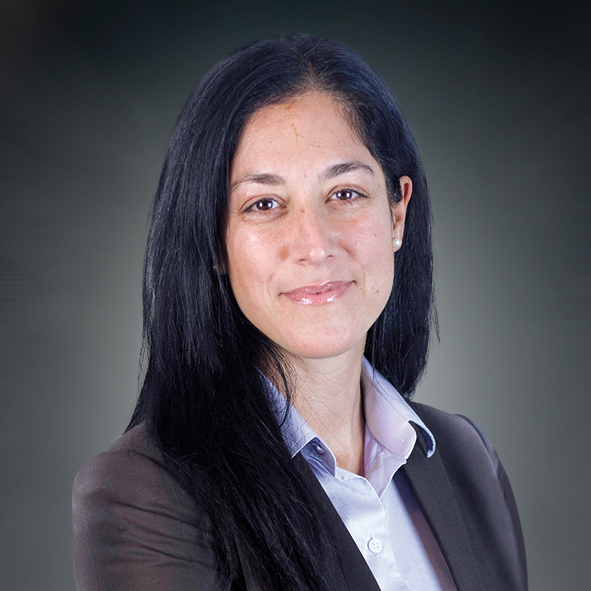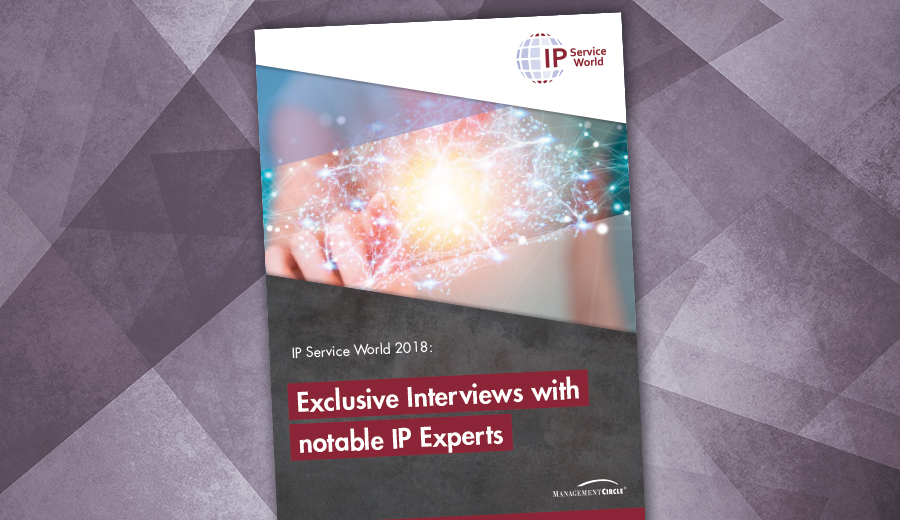
Dr Claudia Tapia is Director, Intellectual Property Policy at Ericsson. The views expressed herein are hers alone and do not necessarily represent Ericsson’s views.
Why do we need a standard to make patents available on Fair, Reasonable and Non-Discriminatory (FRAND) terms and conditions? Claudia Tapia describes in this article that an efficient FRAND reward is as an enabler of innovation and growth. Learn more about this topic!
Claudia Tapia (Dr) is Director IPR Policy & Legal Academic Research at Ericsson GmbH in Munich. Claudia’s main responsibility is to engage in the global debate on FRAND and other IPR topics, particularly being the driver of building contacts with academia promoting research on FRAND. She is also responsible for other areas related to Ericsson’s IPR strategies and policies in Standards Development Organizations.
Statement from her keynote “Internet of Things – Challenges for IP and Best Practices to Achieve a Sustainable Ecosystem” at the IP Service World 2019:
„Estimates are that by 2025 over 70 billions of devices will be connected thanks to the Internet of Things. The benefits for consumers will be huge (safety, entertainment, life improvement, etc). The same applies to those selling connected products. However, with the entry of “new” players using standardised connectivity to enhance their products or services, challenges regarding IP appear. This presentation will explore the best practices to achieve a sustainable well- functioning ecosystem to the benefit of all.”
A connected world brings benefits to all
From multinational companies to children in school – from big cities to rural villages. In fact, every 1,000 broadband connections leads to 80 new jobs. This is because connectivity makes it easier for people to start new businesses and expand existing ones beyond the current boundaries of time (opening hours) and space (where they are located). In order to achieve a networked society, different companies need to speak the “same language”, i.e. follow the same “technical rules”. This set of rules or guidelines that enable devices from different manufacturers to communicate (interoperate) compatibly with each other, at the same time ensuring high performance, are the so-called standards.
Known cellular standards are 2G, 3G and 4G, each generation (G) being an improvement of the previous one. For example, with 2G standard consumers needed 1.5 hours to download a 90-minute movie. With 4G/LTE only 90 seconds are required. And with 5G we will experience connected vehicles, autonomous robotics, smart surveillance, remote operations, augmented reality, and much more. Furthermore, this cellular standardized connectivity will bring additional income to our businesses. For example, the connected automotive ecosystem can incorporate third-party stakeholders, including merchants, insurance companies and transport authorities, so that car companies can control and manage this growing ecosystem.
Developing standards is a complex and costly task
Just to build 3G and 4G standard over 260,000 technical contributions and almost three and a half million man hours (only in meetings) were needed. Thus, it is indispensable that those sharing the technology, often resulting from massive R&D efforts, obtain at least a reasonable royalty on their patented inventions. Equally, the standard will only be successful if it is accessible on reasonable terms. Both are possible thanks to the commitment of holders of patents essential to the standard to make them available on Fair, Reasonable and Non-Discriminatory (FRAND) terms and conditions.
FRAND permits a balance between the interests of innovators and implementers
Generally, FRAND is to be determined by the parties (user and holder of one or more essential patents) in bilateral negotiations. However, when parties cannot agree on FRAND terms, they may end up in court. In litigation, the patent holder often requests an injunction and the user tries to avoid it by raising a FRAND defence. In the EU, a national court, in order to determine whether to grant an injunction, will then analyse the behaviour of both parties in the licensing negotiation following the guidelines established by the Court of Justice of the European Union (CJEU) in Huawei v ZTE (16 July 2015 – Case No. C-170/13).
Despite the undisputed success of FRAND and the balanced framework that the CJEU offered to address the few essential patent cases where parties end up in court, some voices continue advocating changes in the German patent system. For instance, some suggest that injunctions and other exclusionary remedies should not be sought by essential patent holders or allowed except in limited circumstances and only where FRAND compensation cannot be obtain via adjudication, e.g. in the case of lack of jurisdiction or bankruptcy. Others, based on the principle of proportionality, also favour amending §139 patent law so that the claim for cessation and desistance (§139.1) is excluded, if in each individual case, under due consideration of an adequate dissuasive effect, the assertion of the claim is disproportionate (independently of whether the patent is essential or not). This would, according to them, avoid granting injunctions of a small component in increasingly complex products. Currently the German Ministry of Justice is considering these and other proposals within its plan to modernise the patent system.
An efficient FRAND reward is as an enabler of innovation and growth
When reviewing the German patent system, it is indispensable that changes only be made when there is a solid empirical evidence of a problem and the proposed solutions lead to an improvement of the current situation instead of discouraging the sharing of cutting-edge technology. An efficient FRAND reward in timely manner is key to the development and adoption of open, collaborative standards, and as such an enabler of innovation and growth in our industry and in society at large. Weakening unnecessarily the patent system would only put at risk the success of the networked society where the world is connected in real time.




